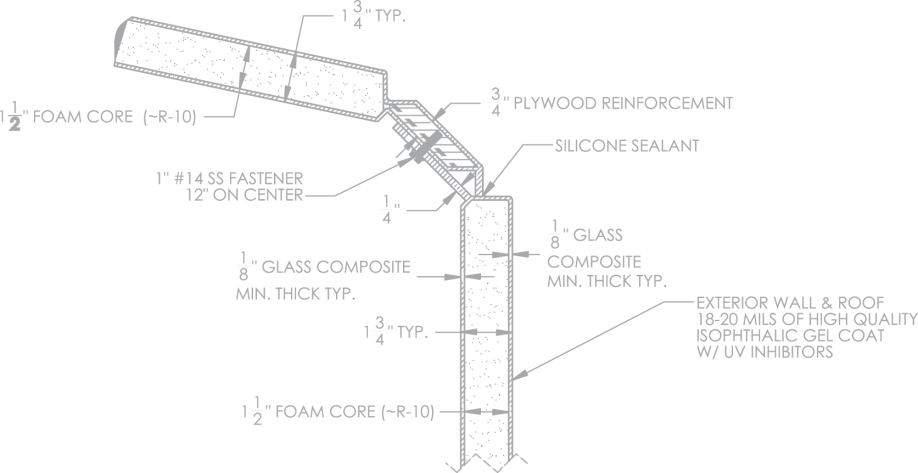Opening the Environmental Benefits of Recycled Compounds in Building And Construction and Layout
In the realm of construction and design, the application of recycled compounds holds significant assurance for improving sustainability practices and reducing environmental influence (composites). By integrating these cutting-edge materials, there is a prospective to resolve important problems such as waste minimization, energy preservation, and a decline in carbon footprint. The change towards a much more sustainable future in these industries depends upon unlocking the full capacity of recycled composites. This discussion will check out the complex benefits and obstacles associated with incorporating recycled compounds right into building and construction and design, offering a glance into the transformative possibilities that exist in advance.

Ecological Effect Reduction
The reduction of ecological influence with using recycled compounds in construction and design plays a critical function in lasting techniques. By including recycled composites right into structure products, the building and construction sector can substantially reduce its carbon footprint and contribute to a more eco-friendly future. These sustainable products, made from repurposed plastics, wood fibers, or various other recycled aspects, use a viable option to standard construction materials without endangering on high quality or longevity.
Recycled composites assist draw away waste from landfills and lower the requirement for removing basic materials, hence saving natural sources. Furthermore, the production procedure of these composites usually consumes much less energy and produces less greenhouse gases contrasted to generating virgin materials (composites). This shift towards making use of recycled composites not just minimizes environmental damage but likewise promotes a circular economy by encouraging the reuse of products that would or else be thrown out
Waste Reduction
With a focus on decreasing waste in construction and design, the integration of recycled composites provides a sustainable option to decrease environmental influence. Waste reduction is a vital aspect of lasting practices, and using recycled compounds offers a chance to achieve this goal efficiently. By using materials that have actually already offered their preliminary purpose, such as recycled plastics or redeemed timber fibers, the building and layout sectors can dramatically reduce the quantity of waste generated and sent to landfills.
Recycled composites have the prospective to divert considerable amounts of waste from standard disposal approaches, contributing to an extra round economy where sources are made use of effectively. In addition, the production procedure of recycled compounds usually consumes much less power and creates fewer exhausts contrasted to virgin materials, even more minimizing the ecological impact of building and design jobs.
Carrying out waste minimization approaches through the consolidation of recycled compounds not just aids in saving natural deposits but additionally advertises a much more lasting strategy to building and making for a greener future.
Power Preservation
Integrating recycled compounds not only decreases waste in construction and layout however also plays an important duty in boosting power preservation practices within the sector. The usage of recycled compounds in construction can substantially contribute to power conservation via various methods. why not try these out By advertising the usage of recycled compounds in building and design, the market can make considerable strides towards accomplishing energy efficiency and reducing its carbon impact, eventually contributing to a more lasting developed setting.
Carbon Footprint Reduction
Enhancing sustainability techniques through the application of recycled compounds in building and style considerably lowers the carbon impact of the market. By incorporating recycled materials into the manufacturing of compounds, the need for virgin resources decreases, resulting in reduced energy usage and greenhouse gas discharges connected with standard manufacturing processes. This reduction in carbon footprint is essential in combating climate modification and advertising a more eco friendly method to building and construction and layout.
The carbon footprint reduction achieved with the adoption of recycled composites aligns with the global push towards lasting practices and the decrease of industrial emissions. Inevitably, by prioritizing the assimilation of recycled composites, the market can make substantial strides in decreasing its carbon impact and contributing to a much internet more lasting future.
Lasting Future
The assimilation of recycled composites in building and construction and layout not just addresses prompt ecological worries yet additionally lays a strong structure for a sustainable future in the sector. By integrating recycled compounds into building products and products, the building and construction and style sectors can dramatically lower their dependence on virgin resources, causing a much more circular economy. This shift in the direction of sustainability is important for mitigating the environmental effect of conventional building methods, which frequently lead to high levels of waste generation and resource exhaustion.

Conclusion
To conclude, recycled composites use considerable environmental advantages in construction and style by minimizing environmental influence, decreasing waste, saving energy, decreasing carbon impact, and promoting a lasting future. Accepting the use of recycled composites can add to a much more environmentally-friendly approach to building and design, inevitably resulting in a much more lasting and greener future for all.
The decrease of environmental influence with the use of recycled compounds in building and construction and layout plays a critical duty in lasting practices.With an emphasis on lessening waste in building and construction and layout, the assimilation of recycled compounds provides a sustainable option to minimize environmental these details influence. By promoting the use of recycled composites in building and style, the industry can make considerable strides in the direction of achieving energy efficiency and decreasing its carbon footprint, ultimately adding to an extra sustainable constructed setting.
